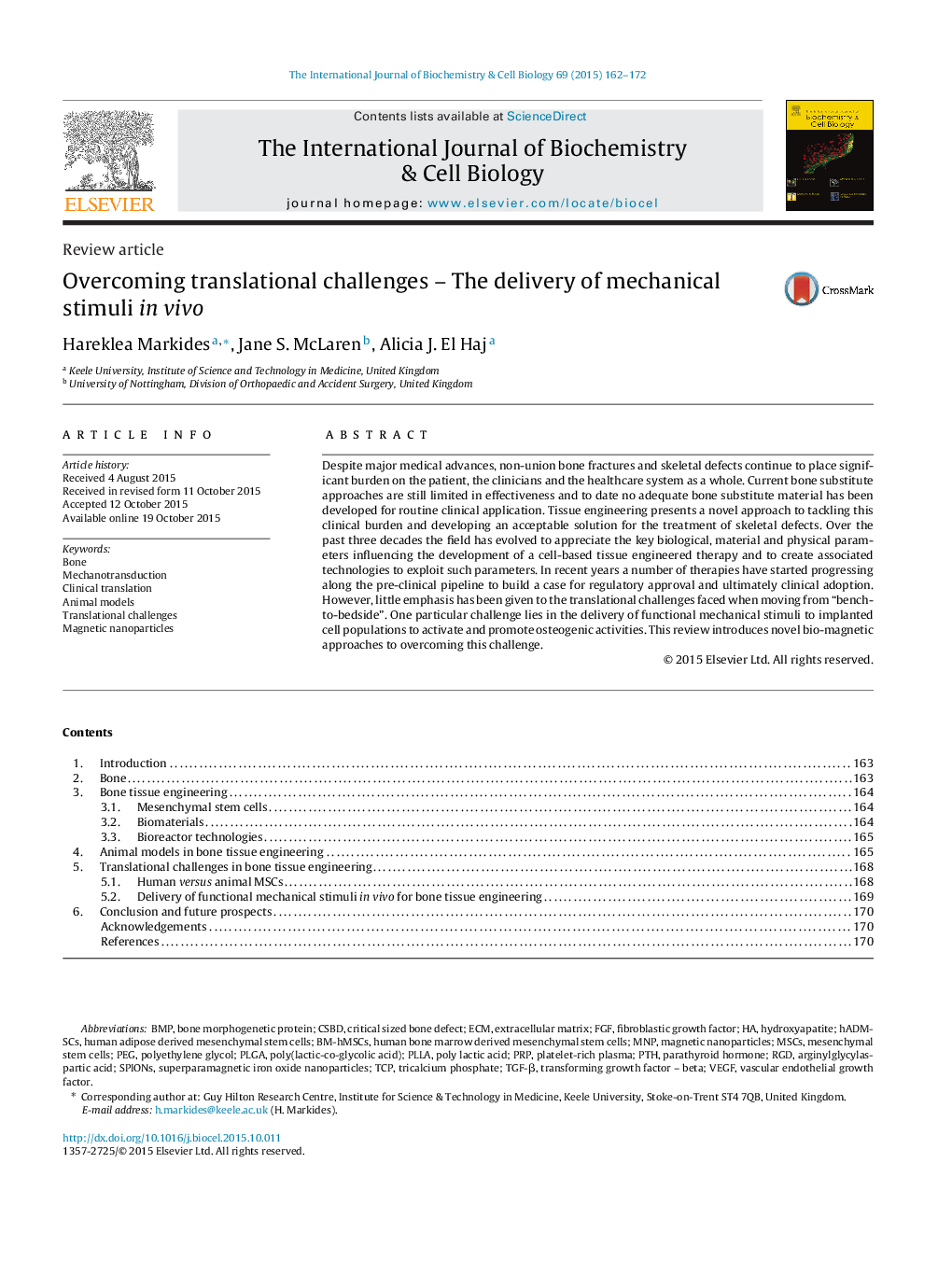| Article ID | Journal | Published Year | Pages | File Type |
|---|---|---|---|---|
| 8322437 | The International Journal of Biochemistry & Cell Biology | 2015 | 11 Pages |
Abstract
Despite major medical advances, non-union bone fractures and skeletal defects continue to place significant burden on the patient, the clinicians and the healthcare system as a whole. Current bone substitute approaches are still limited in effectiveness and to date no adequate bone substitute material has been developed for routine clinical application. Tissue engineering presents a novel approach to tackling this clinical burden and developing an acceptable solution for the treatment of skeletal defects. Over the past three decades the field has evolved to appreciate the key biological, material and physical parameters influencing the development of a cell-based tissue engineered therapy and to create associated technologies to exploit such parameters. In recent years a number of therapies have started progressing along the pre-clinical pipeline to build a case for regulatory approval and ultimately clinical adoption. However, little emphasis has been given to the translational challenges faced when moving from “bench-to-bedside”. One particular challenge lies in the delivery of functional mechanical stimuli to implanted cell populations to activate and promote osteogenic activities. This review introduces novel bio-magnetic approaches to overcoming this challenge.
Keywords
MNPPrPFGFTricalcium phosphatepTHRGDMSCsPLLATGF-βarginylglycylaspartic acidPLGAECMBonepoly lactic acidClinical translationSPIONsMesenchymal stem cellsVascular endothelial growth factorVascular Endothelial Growth Factor (VEGF)fibroblastic growth factorTCPExtracellular matrixAnimal modelsBMPMechanotransductionSuperparamagnetic iron oxide nanoparticlesMagnetic nanoparticlesparathyroid hormoneHydroxyapatiteBone morphogenetic proteinplatelet-rich plasmapoly(lactic-co-glycolic acid)polyethylene glycolPEG
Related Topics
Life Sciences
Biochemistry, Genetics and Molecular Biology
Biochemistry
Authors
Hareklea Markides, Jane S. McLaren, Alicia J. El Haj,
